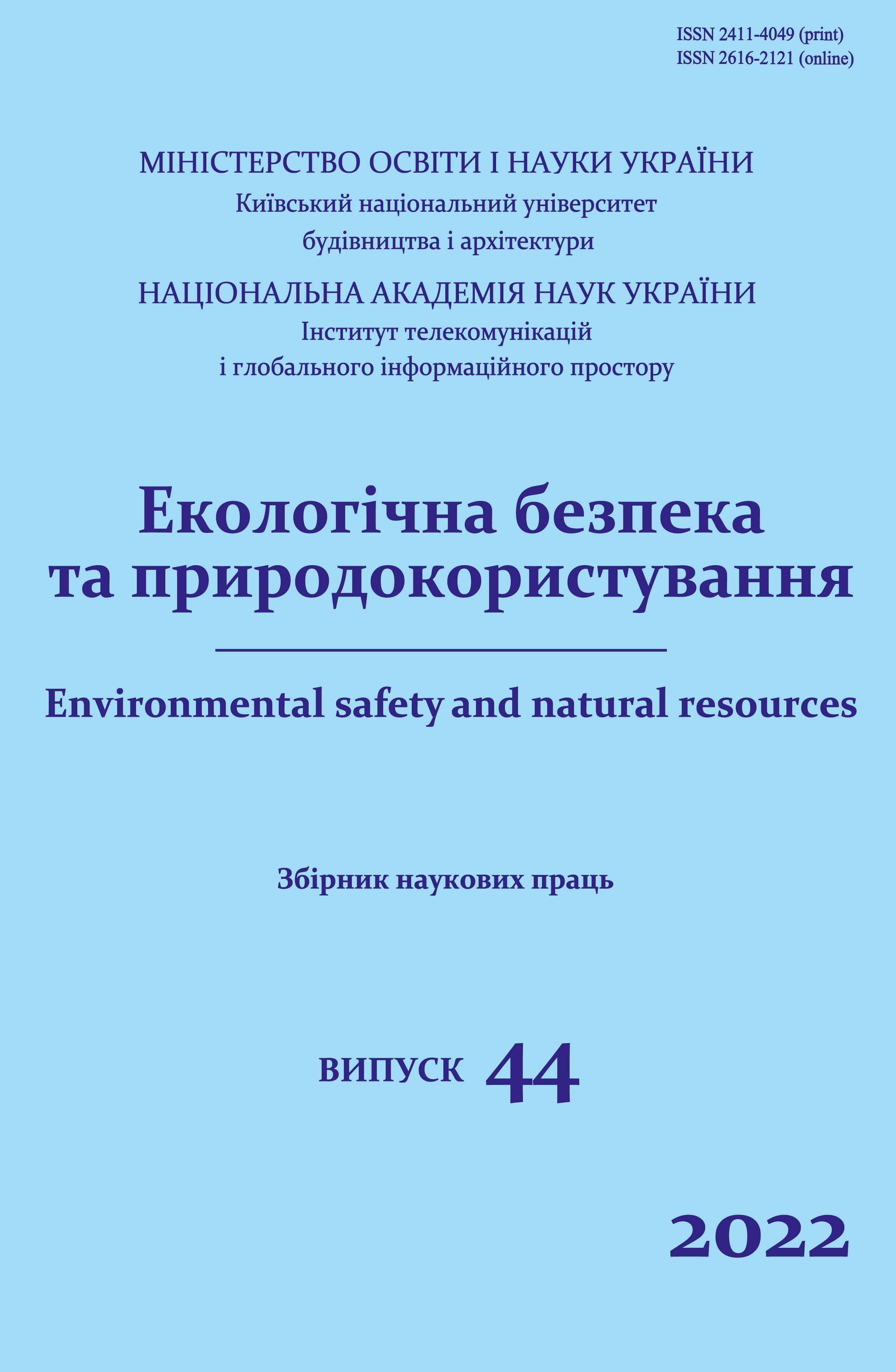Study of hydrodynamic parameters of a self-operating sluge to prevent flood spills
DOI:
https://doi.org/10.32347/2411-4049.2022.4.114-127Keywords:
flood, flooding of territories, automatic gateway, ejector pump, simulation modelingAbstract
All methods of combating the flooding of populated areas are directly related to the execution of significant volumes of earthworks, the construction of special structures, and therefore require comprehensive analysis and substantiation and the selection of the most economically feasible and affordable project options during design.
But analyzing the main methods of protecting the territory of settlements from flooding, it should be noted that even with their optimal use, the problem of flooding territories due to river tributaries remains. Therefore, it is worth focusing attention on the search for a technical solution that would make it possible to pump water from the tributary to the river without using expensive, complex in design and energy-consuming equipment. One of the promising solutions is the use of automatic gateways.
The purpose of the work is to study the hydrodynamic parameters of the proposed design of the self-acting lock to prevent flood spills.
The design of a hydrotechnical structure (self-acting sluice to prevent flood spills) is proposed, which is designed to prevent flooding of territories due to river spills and can be used to regulate the water level in hydraulic systems. It is shown that the use of the developed structure will make it possible to significantly reduce the negative consequences of possible flood spills in the territories.
A three-dimensional model of the self-acting sluice was developed in the SolidWorks program to confirm its performance and study the hydrodynamic parameters of the self-acting sluice. The simulated simulation of the proposed design of the ejector pump in the FlowSimulation software module confirmed its efficiency and made it possible to determine the distribution of pressures and fluid movement speeds in it. It was established that the flow rate of the liquid flowing through the cross-section of the pipeline for water intake from the tributary is 0.055 m3/s at a river flow speed of 3 m/s.
References
Sokhnych, A.Ya. (Ed.). (2010). Vykorystannya zemelʹ naselenykh punktiv z osnovamy mistobuduvannya: monohrafiya. Lʹviv: Vydavnytstvo «Liha-Pres» [in Ukrainian].
Voroshylov, N.A., Hladyshev, V.P., Humerov, S.U., & Kurhuzov, V.N. (27.05.2007). Patent 2299947 (RU), MPK E02V 3/00. Ustroystvo dlya preduprezhdenyya pavodkovykh razlyvov.
Navrotsʹkyy, B.I., & Sukhin, YE.I. (1999). Tekhnichna mekhanika ridyn: pidruchnyk dlya tekhnichnykh vuziv. Kyiv: Znannya [in Ukrainian].
Mykhaylyuk, V.V., Kontsur, I.F., Kopey, B.V., & Deyneha, R.O. (2022). Hidromashyny: atlas skhem ta konstruktsiy. Ivano-Frankivsʹk: IFNTUNH [in Ukrainian].
Mandryk, O.M., Mykhaylyuk, R.Y., Vytrykhovsʹkyy, Y.A., Mykhaylyuk, V.V., & Shkitsa, Y.I. (17.08.2022). Patent na korysnu modelʹ № 151593, Ukrayina, E02B 3/10, E02B 8/00. Samodiyuchyy shlyuz dlya zapobihannya pavodkovym rozlyvam. Byul. № 33.
Volodin, O.S., Kryvoplyas-Volodina, L.O., Havva, O.M., & Hnativ, T.T. (2018). Intehrovani rishennya funktsionalʹnykh mekhatronnykh moduliv v zadachakh syntezu pakuvalʹnykh mashyn. In Hidroaeromekhanika v inzhenerniy praktytsi: Materialy mizhnarodnoyi naukovo-tekhnichnoyi konferentsiyi (pp. 69-41). Kyiv: IATS NTUU«KPI im. I. Sikorsʹkoho» [in Ukrainian].
Melʹnykov, O.P. (2013). Doslidzhennya vplyvu heometrychnykh parametriv protochnoyi chastyny sverdlovynnoho strumynnoho nasosa na yoho kharakterystyky. Naukovyy visnyk Ivano-Frankivsʹkoho natsionalʹnoho tekhnichnoho universytetu nafty i hazu, 2, 165-173 [in Ukrainian].
Deshpande, O.N., & Narappanawar, N.L. (2015). Space advantage provided by De-Laval nozzle and bell nozzle over venturi. In Proceedings of he world congress on engineering (vol. II WCE 2015, pp. 1165-1168). London, UK.
Murillo, W.O., Palacio-Fernandez, J.A., Patiño Arcila, I.D., Zapata Monsalve, J.S., & Hincapié Isaza, J.A. (2020). Analysis of a Jet Pump Performance under Different Primary Nozzle Positions and Inlet Pressures using two Approaches: One Dimensional Analytical Model and Three Dimensional CFD Simulations. J. Appl. Comput. Mech., 6(SI), 1228–1244. https://doi.org/10.22055/JACM.2020.33339.2205.
Wang, Wan. (2017). Simulation of Venturi Tube Design for Column Flotation Using Computational Fluid Dynamics. Graduate Theses, Dissertations, and Problem Reports. 6909. https://researchrepository.wvu.edu/etd/6909. https://doi.org/10.33915/etd.6909.
Sree Harsha Bandaru, & Arjun Singh. CFD analysis of De Laval Nozzle Geometry & Reverse Flow Cavitation Phenomenon. International Journal for Research in Applied Science and Engineering Technology (IJRASET), 5(I), 129-134.
Downloads
Published
How to Cite
Issue
Section
License
Copyright (c) 2022 O.M. Mandryk, R.I. Mykhailyuk, V.I. Artym, V.V. Mykhailyuk

This work is licensed under a Creative Commons Attribution 4.0 International License.
The journal «Environmental safety and natural resources» works under Creative Commons Attribution 4.0 International (CC BY 4.0).
The licensing policy is compatible with the overwhelming majority of open access and archiving policies.

